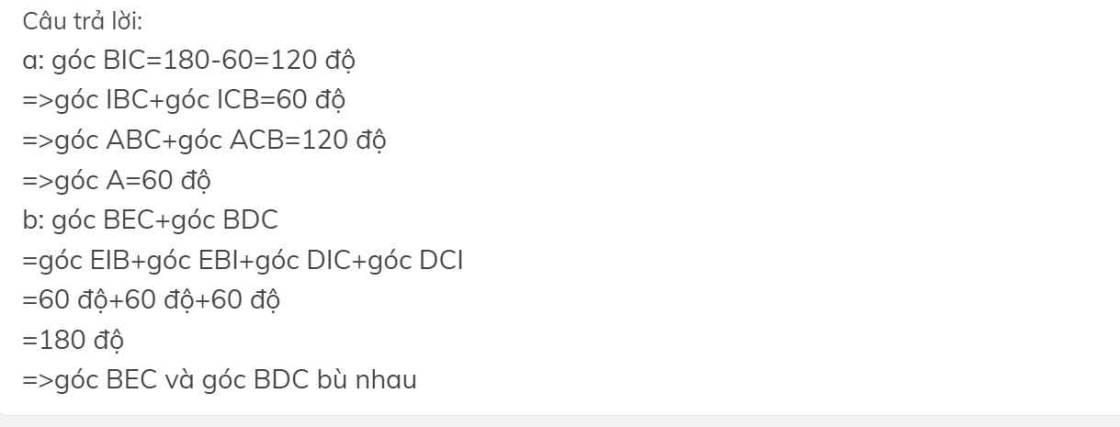Hãy nhập câu hỏi của bạn vào đây, nếu là tài khoản VIP, bạn sẽ được ưu tiên trả lời.

\(\widehat{ACB}=180^0-\widehat{A}-\widehat{B}=60^0\left(\Delta ABC\right)\\ \Rightarrow\widehat{ACD}=\widehat{BCD}=\dfrac{1}{2}\widehat{ACB}=30^0\left(CD\text{ là phân giác }\widehat{ACB}\right)\\ \Rightarrow\left\{{}\begin{matrix}\widehat{CDA}=180^0-\widehat{A}-\widehat{ACD}=70^0\left(\Delta ACD\right)\\\widehat{CDB}=180^0-\widehat{CDA}=110^0\left(\text{kề bù}\right)\end{matrix}\right.\)

\(\Delta ABC\) có: \(\widehat{A}+\widehat{B}+\widehat{C}=180^0\)
\(=>60^0+\widehat{B}+44^0=180^0\)
\(=>\widehat{B}=76^0\)
Ta có: \(\widehat{ABD}=\widehat{CBD}=\dfrac{1}{2}\widehat{B}\) ( Vì BD là tia pg của \(\widehat{B}\) )
\(=>\widehat{ABD}=\dfrac{1}{2}.76^0=38^0\)
\(\Delta ABD\) có \(\widehat{CDB}\) là góc ngoài tại đỉnh \(D\)
\(=>\widehat{CDB}=\widehat{A}+\widehat{ABD}\)
\(=>\widehat{CDB}=60^0+38^0=98^0\)
Vậy: \(\widehat{ABC}=76^0;\widehat{ABD}=38^0;\widehat{CDB}=98^0\)
